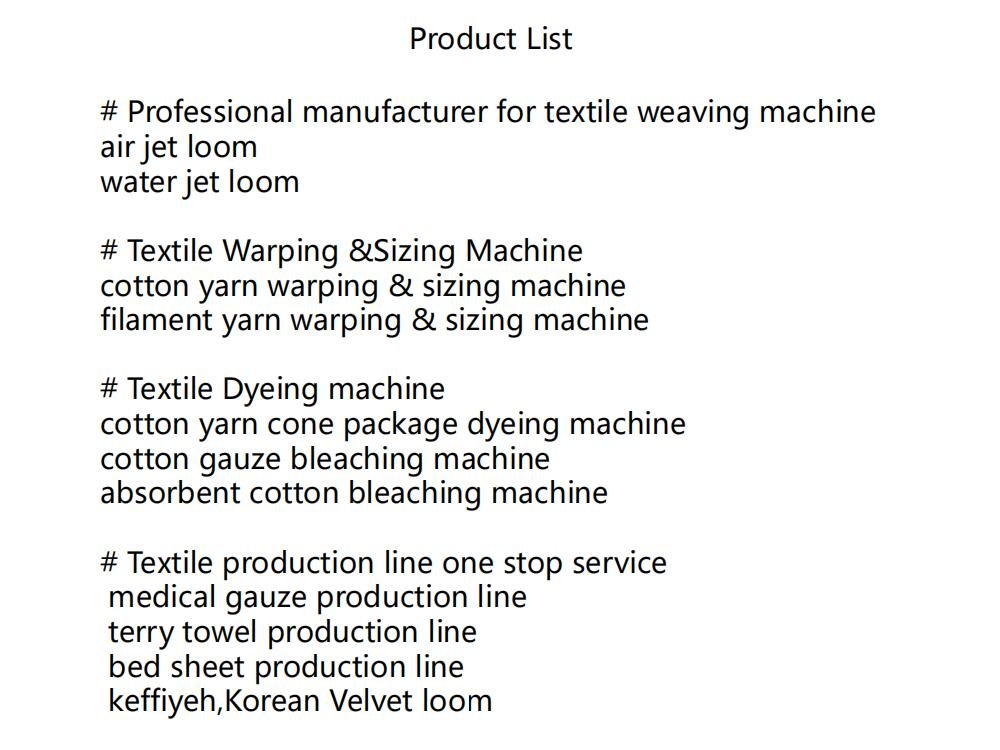Air Jet Loom: Advantages and Disadvantages Introduction: The air jet loom is a highly advanced weaving machine that utilizes a jet of air to propel the weft yarn through the warp shed. It has gained significant popularity in the textile industry due to its efficient production capabilities and improved fabric quality. However, like any other technology, the air jet loom also comes with its own set of advantages and disadvantages. This article aims to explore the pros and cons of using air jet looms in textile manufacturing. Advantages of Air Jet Loom: 1. High Production Speed: One of the significant advantages of air jet looms is their ability to operate at high speeds. These machines can achieve a faster weaving rate compared to other types of looms, resulting in increased productivity and shorter production cycles. 2. Versatility: Air jet looms can handle a wide range of fabrics, including cotton, polyester, silk, and blends. They are suitable for weaving various types of fabric, from lightweight to heavy materials, making them versatile for different textile applications. 3. Reduced Energy Consumption: Air jet looms consume less energy compared to traditional rapier or projectile looms. The air jet technology eliminates the need for a shuttle, reducing the overall machine weight and energy requirements. This results in lower electricity costs and contributes to environmental sustainability. 4. Excellent Fabric Quality: Air jet looms produce high-quality fabrics with minimal flaws. The air jet insertion method ensures even weft insertion, resulting in uniform fabric structure, improved selvages, and reduced yarn breakage. The fabrics woven on air jet looms have a smooth texture and excellent dimensional stability. Disadvantages of Air Jet Loom: 1. Limited Yarn Compatibility: Air jet looms are not suitable for all types of yarns. They work best with medium to fine yarns, and thicker or coarse yarns may cause difficulties during weaving. This limitation restricts the range of yarn options available for manufacturers using air jet looms. 2. High Initial Investment: Air jet looms are relatively expensive compared to other types of weaving machines. The initial investment required to purchase and set up these looms can be a significant barrier for smaller textile manufacturers or those with limited financial resources. 3. Increased Maintenance and Spare Parts Cost: Due to their complex design and technology, air jet looms require regular maintenance and servicing. The cost of spare parts and skilled technicians can be higher compared to other loom types. This aspect should be considered when calculating the overall cost of operating air jet looms. 4. Noise and Vibration: Air jet looms tend to generate more noise and vibration during operation compared to other loom types. This can create a less comfortable working environment for operators and may require additional measures to minimize noise pollution. Conclusion: The air jet loom offers numerous advantages, including high production speed, versatility, reduced energy consumption, and excellent fabric quality. However, it also has some disadvantages, such as limited yarn compatibility, high initial investment, increased maintenance costs, and noise/vibration issues. Textile manufacturers should carefully evaluate their specific requirements and consider these factors before deciding to invest in air jet looms.

